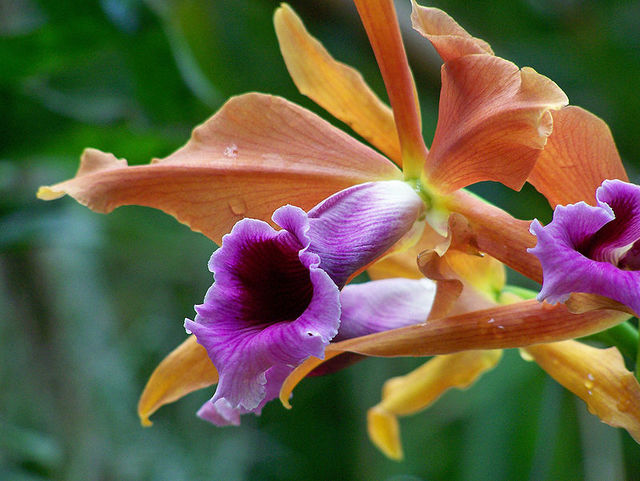Laelia (Cattleya) tenebrosa is one of the most spectacular of the big Laelias, now moved into the genus Cattleya. It is closely related to Laelia purpurata and Laelia grandis but needs less sun than either of these other plants to flower nicely. If they receive too much sun, the leaves will show reddish spots on the leaves. The species is from Brazil where they flower during the hottest summer months. It is now considered virtually extinct in the wild from over collection and forest destruction. There are many cultivated varieties available although somewhat difficult to find at times.
The large flowers, 8 inches or 20 centimeters in width, are produced two to three, rarely four or five, on an inflorescence and are a golden, bronze, copper or brownish color with a spectacular usually dark pink to deep purple lip. The flower colors are extremely variable so it is a good idea to see a flowering plant before purchasing so you are sure to get a good variety. As you can see from the picture these flowers are very open in nature with space between the sepals and petals.
Like L. purpurata, these can be large plants and will not flower well until they have reached a mature size of approximately 5 pseudobulbs. The leaves are large, approximately 12 inches or 30 centimeters long on top of a pseudobulb the same size and a mature plant will take up a large container. They have a rather nice upright growth habit when potted, so the size is fairly easy to accommodate. They take hot to intermediate temperatures but are much less cold tolerant than the other large Laelias.
This orchid likes more water than other Cattleyas and should not be allowed to dry out completely during peak growing times in the spring. After flowering it needs a dryer environment until it starts new growth. It starts its growth period in the fall and then rests for about a month until it flowers in the spring. The flowers are fairly long lasting for the genus and often last two or three weeks especially if you can keep them out of the hottest summer temperatures.
If you have room and are a fan of the large Cattleya-like flowers, this is definitely one of the plants to try growing. There are many different clones and they are so different that you can grow several different ones and enjoy an almost completely different color on each one.
